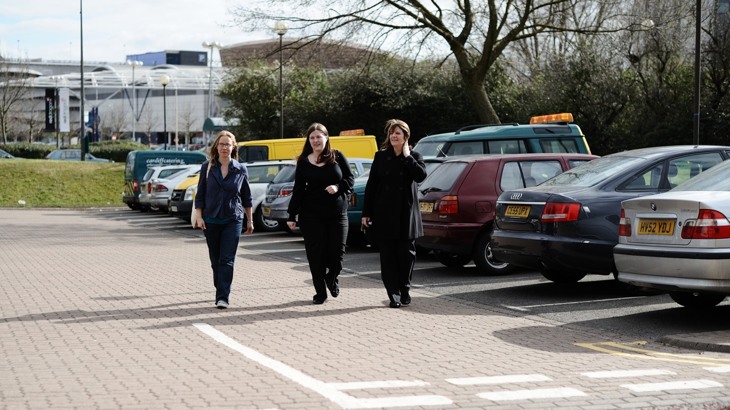The active travel and gender report published by Sustrans shows that women’s journeys around cities are typically shorter than men’s, use different modes of transport and are more likely to involve ‘trip-chaining’ (multi-stop journeys) which tend to be for a balance of child care, work and household responsibilities.

Whilst women are motivated to travel actively for physical and mental health reasons, worries about their personal safety, convenience (particularly when taking multi-stop trips) and appearance are all barriers to preventing them from cycling and walking.
The ‘Are We Nearly There Yet?’ report looked at the travel habits and choices of nearly 2,000 women in Glasgow and combined the findings with a literature review of research on women’s travel patterns across Scotland, the UK and Europe.
The report also found that there is a lack of evidence to show how women participate in creating transport policy and planning in the UK. Currently, transport has the lowest percentage of women in senior posts within the public sector in Scotland, with women representing only 6.25% of heads of transport bodies. In addition, the transport sector accounts for only 22% of female workers UK-wide.
Sustrans Scotland’s Evaluation Manager, Suzanne Motherwell, who led the research, said:
“Our research has shown that there are a number of women-specific barriers such as lack of time, complex schedules and fears of personal safety, which stop them from travelling actively more often.
“If we are to get more people walking and cycling, the industry must address the inequalities that exist in transport – at every level – from users right through to planning and policy making.
“By designing and building infrastructure that caters for both genders’ needs, we can help ensure the gap between the levels of women and men cycling is closed, and importantly improve the everyday cycling levels in our cities and towns.”
Katie Hulland, President of Women in Transport, said:
“Less than one-quarter of UK transport workers are women, so we are massively under-represented in the planning and delivery of transport policy, infrastructure and services. We agree a more gender balanced workforce would help the transport sector better address women’s needs as customers and service users.
“As the leading professional network for women in transport, we’re working with the transport industry, parliament, government and beyond, to address women’s under-representation and promote a diverse and inclusive transport workforce.”
The research has also been welcomed by Engender, Scotland’s feminist organisation. Engender has carried out wide-reaching research on women’s representation in decision making and power and has also highlighted issues experienced by women in public spaces and on public transport as part of its recently-published ‘Gender Matters Roadmap’.
Emma Ritch, Executive Director of Engender, said:
“Scotland’s travel systems are not designed around the needs of women, who tend to make shorter and more frequent journeys and are more concerned about their personal safety.
“This obliviousness is perhaps unsurprising given that women are massively underrepresented in transport bodies: only 6.25% of their chief officers are women. Making active travel work for women makes it work better for all.”
Lynda Addison OBE, Chair of the Transport Planning Society, said:
“Gender considerations need to be included at the earliest stages of planning transport and infrastructure, as part of an inclusive planning and transport policy, as well as the design process. While transport planning is a fairly diverse profession, we know more needs to be done and we want more women to choose transport planning careers. That’s why we’re designing a campaign to promote transport planning to a more diverse talent pool. The ambition is for transport planners to more accurately mirror the demographics of service users, so planners can better cater for customers’ needs.”
In Glasgow, 2% of women chose cycling as a mode of transportation, compared to 16% of men. The figures mirror cycling levels across the UK, with men doing nearly three times as many cycling journeys as women.

